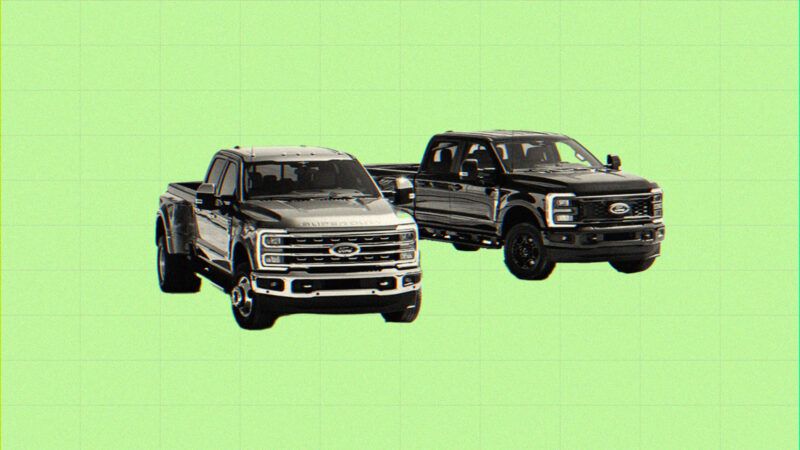Ford Rolls Out Gas-Guzzlers To Fund Its Green Energy Ambitions
While that might seem backward, even the most worthwhile green energy goals will require some level of trade-off if they are to be achieved.

This week, Ford Motor Co. unveiled its pickup truck product line for the 2023 model year. Among the options for the workhorse Super Duty series, the auto giant will offer multiple engine options, including a 6.8-liter gas engine, a 6.7-liter diesel engine, and a hulking 7.3-liter gas engine that automotive blog Jalopnik named "Godzilla." Depending upon configuration, the truck can be over 6 feet tall and more than 22 feet long.
Given the company's stated goals of reaching complete carbon neutrality and a shift to all-renewable energy by 2035, a beefed-up internal combustion engine would seem to directly contradict the mission statement. Ford has a different take: Gigantic gas-powered trucks are essential to the mission.
Ford's trucks are part of its "F-series," from the mainstream F-150s to the heavier-duty F-250s, F-350s, and above, used mostly as commercial vehicles. Anything above an F-150 is considered part of its "Super Duty" line.
To say that trucks are important to Ford's bottom line is an understatement. As CEO Jim Farley told Yahoo Finance, "If the Super Duty was a separate company, it would have more revenue than some Fortune 500 companies." The F-series alone generates almost $40 billion annually, nearly a third of the company's global revenues.
As such, the continued success of the global truck brand is essential to the company's future aspirations, including the $50 billion it pledged toward building out its production of electric vehicles (E.V.s). By 2026, it plans to be able to put out 2 million E.V.s per year, more than twice what Tesla sold in 2021.
Even still, it might seem backward to dedicate so much of one's green energy goals to the continued success of gas-guzzling behemoths. But unfortunately, even the most worthwhile goals will involve some trade-offs.
For example, the European Union (E.U.) plans to become fully carbon neutral by 2050. It went so far as to ban the sale of all internal combustion engines by 2035. But this summer, facing devastating energy shortfalls in the near term, many European nations and the E.U. reversed course, pouring tens of billions into restarting coal-fired power plants and importing coal and natural gas to get through the winter.
Despite the dire situation, the United Nations (U.N.) Acting High Commissioner for Human Rights cautioned Europe to "consider the long-term consequences of locking in more fossil fuel infrastructure… There is no room for backtracking in the face of the ongoing climate crisis."
Indeed, carbon emission reduction is fundamental to mitigating the effects of climate change. But the transition from a fossil fuel-intensive economy to one that more readily utilizes green technology cannot happen overnight. To progress toward the goal, private firms like Ford must stay in business, and utility providers must keep the lights on. Better they do that with fossil fuels than not at all.
Europe is committed to achieving carbon neutrality by 2050, but it must also provide for its citizens' needs today. Similarly, if your goal is to eventually live in a world where more than a quarter of all U.S. greenhouse gas emissions do not come from the transportation sector, then it may require some awkward transitory periods of half-measures to get there.


Show Comments (77)